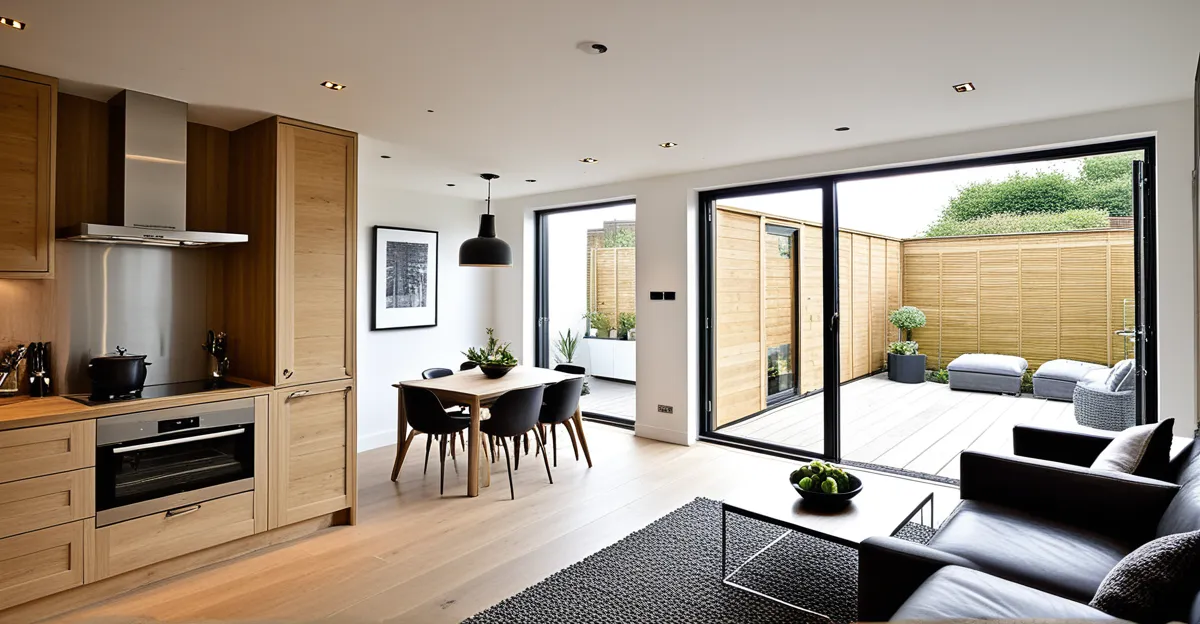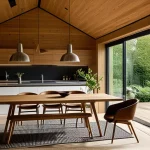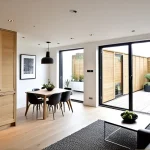Maximising Small Spaces with Modern Design
Modern design is essential when transforming small UK living spaces into efficient, attractive homes. Embracing contemporary interiors means prioritising open layouts, clean lines, and multifunctionality to make every square foot count. The key strategy involves visually expanding rooms by minimising clutter and blending furnishings seamlessly with the walls and floors.
One effective principle is to use space-saving solutions that allow flexibility and adaptability—think fold-away tables, wall-mounted storage, and compact seating that doesn’t overpower the room. By integrating these elements, homeowners turn constrained spaces into functional zones for living, working, or relaxing without sacrificing style.
Have you seen this : How Does Sustainable Design Influence UK Home Décor Today?
Real-life UK home transformations highlight how modern design breathes new life into previously cramped settings. These before-and-after examples showcase innovative approaches like removing unnecessary partitions or using sliding doors, which create the illusion of openness and improve natural flow. Contemporary interiors combined with clever design choices mean small spaces become effortless to navigate and enjoyable to inhabit, demonstrating that size need not limit comfort or aesthetics.
Practical Space-Saving Design Solutions for UK Homes
Small UK living spaces demand space-saving furniture that maximises every inch. Incorporating multifunctional rooms is key. For example, a guest room that doubles as a home office uses compact desks and fold-away beds to adapt to daily needs seamlessly.
In parallel : What Changes Can You Make at Home to Enhance Comfort?
Built-in storage is another essential. Shelves integrated into walls or under stairs utilise awkward corners often wasted. These solutions reduce clutter dramatically and allow small spaces to function without feeling cramped. Vertical storage also draws the eye upward, enhancing perceived room height.
Effective decluttering tips focus on regular evaluation of possessions and using organisers that categorise and hide items neatly. Employing under-bed storage or stylish baskets keeps surfaces clear, maintaining the clean, airy feel crucial for smaller homes.
In summary, combining modular furniture with smart storage and disciplined organisation empowers small UK homes to be functional. These practical solutions champion the core modern design principle: creating adaptable, clutter-free, and attractive interiors that work for varied lifestyles.
Enhancing Small Spaces with Lighting and Colour
Lighting effects and colour schemes are powerful tools in small room design to visually expand small UK living spaces. Natural light, when maximised with unobstructed windows and sheer curtains, floods rooms, making them feel airy and open. Complementing this, well-planned artificial lighting—such as layered ceiling lights, wall sconces, and under-cabinet LEDs—prevents shadows that can close in a compact area.
Choosing the right colour palettes is equally crucial. Light, neutral tones like soft greys, creams, and pastel hues reflect light rather than absorb it, creating an impression of openness. This pairing of bright lighting with pale colours enhances the feeling of space without overwhelming the eyes.
Adding reflective surfaces, including mirrors, gloss finishes, and glass furniture, further amplifies light reflection. Mirrors, strategically placed opposite windows or light sources, double the perceived room size. Glossy paint and tiles bounce light around the room, reinforcing modern design principles that emphasise brightness and simplicity.
Together, these techniques transform compact homes into bright, welcoming environments, making the most of their limited footprint through thoughtful use of lighting and colour.
Visual Inspiration: Case Studies from Small UK Living Spaces
Explore UK home case studies showcasing remarkable transformations that inspire modern flat ideas. One standout example is a compact Victorian terrace makeover. By removing redundant partitions and installing sliding doors, the space gained a fluid layout. These changes enhanced natural flow and maximised usable areas—central goals in small UK living spaces design.
Another case involves modernising a city centre apartment where clever use of built-in storage and fold-away furniture redefined functionality without compromising style. This project emphasised space-saving solutions like wall-mounted shelves and multifunctional furnishings, transforming a cramped interior into a sleek, adaptable home.
A loft conversion in a traditional UK home demonstrates how upper-level spaces can be reinvigorated through contemporary interiors. Incorporating light-coloured surfaces and strategic lighting highlighted the volume, while bespoke cabinetry optimised every nook.
These before-and-after room makeovers illustrate how thoughtful design choices—from maximising natural light to integrating space-saving furniture—tackle real constraints. The results combine practicality with aesthetics, proving that even the smallest UK homes can embody comfort and style through considered renovation.
Maximising Small Spaces with Modern Design
Modern design is vital for small UK living spaces, providing core strategies that enhance both form and function. The essence is to create open, uncluttered environments where every element serves a purpose. Central to this approach are space-saving solutions such as wall-mounted shelving, foldable furniture, and integrated storage units that blend with contemporary interiors to maintain a streamlined aesthetic.
Key principles focus on fluid layouts that avoid unnecessary partitions. This increases visual continuity and maximises usable floor area. For example, replacing solid doors with sliding or pocket doors allows rooms to connect more naturally, an essential tactic in compact UK homes.
Real-life transformations illustrate these concepts vividly. One Victorian terrace, once congested, was opened up by removing dividing walls and adding built-in storage, creating an airy feel without increasing square footage. Another city centre flat combined minimalist furnishings with clever space-saving solutions, resulting in a stylish but practical home. These before-and-after examples show how modern design can revolutionise limited spaces, proving that thoughtful planning and smart choices make even the smallest homes comfortable and attractive.







